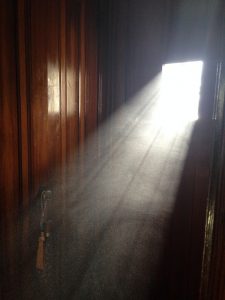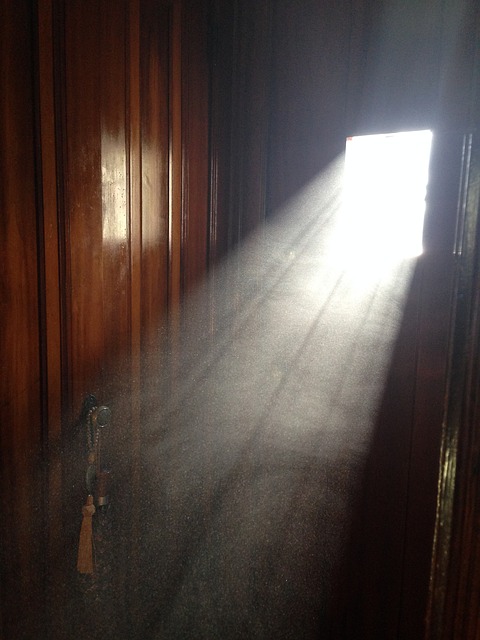Are you worried about the quality of the air that you breathe? Even if you are indoors, it does not mean that the air is safe. Dust is one of the major indoor air pollutants that cause significant health problems. What can you use to remove dust from the air? Do Air purifiers remove dust?
Today, we embark on a journey of explaining if, how, and how effectively air purifiers remove dust.
When exposed to dust for long periods, you risk short-term allergic reactions and long-term illnesses. Therefore, you need to install air purifiers in your homes. But do air purifiers remove dust? Yes is the answer. However, you need to be more aware of what to do to maximize efficiency.
Many air purifiers in the market can remove dust from indoor air. Dust consists of fine dry particles suspended in the air. The definition is broad as dust contains fine soil, organic matter, skin, clothing materials, hair particles, pollen, and small pieces of dirt.
In our households, breathing in dust particles seems inevitable. That is why manufacturers have come up with air purifiers to rid the air of such pollutants. If you or your kin are allergic to dust, you should purchase one of the best air purifiers for dust to assist you in cleaning your air.
How Do Air Purifiers Remove Dust?

Some air purifiers are mechanized to draw air in a filter or through multiple filters. Air purifiers with HEPA mechanical filters capture tiny particles (as small as 3 microns). As air moves through the filter, dust and other pollutants are trapped as clean air is released back into your indoor space.
So, HEPA air purifiers can clean up to 99.97 percent of dust particles from the air. However, it would help if you changed HEPA filters yearly to maintain the purifier’s efficiency. The best air purifiers for dust have HEPA or True HEPA filters.
Besides that, some purifiers use electrostatic working principles in air purification. The electrostatic filter consists of wires and collecting plates. As air flows through the filters, it gets ionized by the high electromagnetic field charging pollutant particles in the process.
The charged particles then remain behind. As a result, the air in your indoor space becomes purified and free from dust. Then, you can easily remove the particles that settle on surfaces by shaking the plates, washing, or scrapping the residue.
Other air purification technologies do not work so well to filter dust. For example, UV air purifiers successfully trap mould and airborne microorganisms but inefficiently capture dust particles. However, some air purifiers combine two filters to give optimum air cleaning indoors.
Other Factors to Consider when Looking for a Good Air Purifier
Apart from buying a HEPA filter air purifier, a few other things you need to keep in mind include:
What else is a nuisance apart from dust?
You may also be dealing with other pollutants such as smoke, pollen, dust mites, odours, fumes, kitchen smells, and VOCs (volatile organic compounds).
HEPA filters will capture almost all airborne pollutants. However, if you want to remove odours, paint fumes, kitchen smells, and VOCs, an air purifier with an extra activated carbon filter is the best pick.
Check the ACH rating
ACH in full is Air Changes per Hour (or Air Exchanges per Hour). If an air purifier’s ACH is 4, this means that it cleans all the air in the room four times an hour (every 15 minutes). So, if you’re comparing two air purifiers, pick the one with a higher ACH rating.
What’s the CADR rating?
CADR in full is Clean Air Delivery Rate. CADR values are based on how well a particular air purifier removes the most common airborne pollutants. So, CADR rating will be given as one figure or three figures representing how effective it is in removing dust, smoke, and pollen.
Again, if you have to choose one air purifier among several, pick the one with the highest dust CADR.
How big are your rooms?
Lastly, check the recommended room size for the air purifier you intend to buy. This value should be greater or equal to your room’s size. Otherwise, you may get sub-par performance.
For example, if the largest room in your house measures 500 square feet, go for an air purifier that can comfortably clean 500 sq. ft. or larger. In fact, for the best performance, ensure that the recommended coverage area exceeds your room size.
What Else Can You Do to Eliminate Dust?
Air purifiers focus on the dust that is already floating in the air. However, if you rub your finger on the table, window panes, and other flat surfaces, you’ll notice that there is a lot of dust around. Also, a lot of dust tends to settle on the carpet, seats, and bedding.
This dust then gets agitated from time to time and starts floating in the air. So, if you don’t take the necessary measures, it will be next to impossible to remove all dust in the air, even when you have the best air purifier in Canada.
Below are a few pointers to keep your home free of dust:
- Do not enter the house with shoes as they tend to carry lots of dust and dirt.
- Dust your home regularly using a damp cloth or a microfiber cloth.
- Vacuum regularly too. Also, if your vacuum tends to throw dust back into the air, wait a few minutes after vacuuming and dust the house.
- Change air purifiers as per the manufacturer’s guidelines or every time you notice that the air purifier is not working properly.
- Wash your carpet and bedding regularly.
- Make use of vacuum cleaner attachments like the dusting brush to remove dust from above-floor surfaces such as seats and upholstery.
Below are a few more tips on how to reduce dust in your home (YouTube video by Expert Home Tips):
Conclusion
Do air purifiers remove dust? Yes, they do. However, ensure that you buy an air purifier with a superior filtration system. Also, buy an air purifier that is suitable for your room size and has a high CADR and ACH rating.
Now that you know the effectiveness of air purification technologies, it is easy to select the best one that fits your needs. Air purifiers with HEPA technology are the best option for dust removal. They are environment-friendly and only require filter change once a year.
It would be best if you avoided electrostatic precipitators and ionizers. They are likely to produce ozone which may cause allergies such as throat irritation, chest pain, and coughing. Finally, pick a compatible device to your space size when selecting an air purifier.

